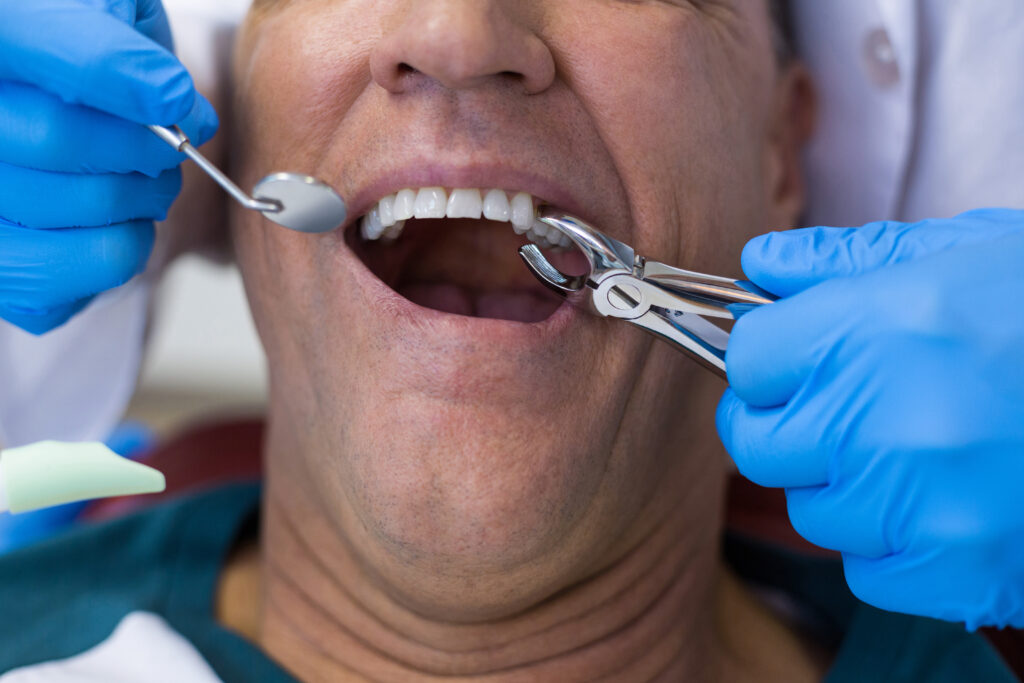Extractions
 Dental extractions surprisingly provide a helpful way to address a problem that’s causing you pain and other symptoms. Extracting a tooth can take away the damage associated with a tooth to solve the problem and keep it from spreading to healthy teeth and gums around that tooth. This makes it a form of preventive dentistry.
Dental extractions surprisingly provide a helpful way to address a problem that’s causing you pain and other symptoms. Extracting a tooth can take away the damage associated with a tooth to solve the problem and keep it from spreading to healthy teeth and gums around that tooth. This makes it a form of preventive dentistry.
At Reed Family Dental, our dentist, Dr. Allison Reed, takes every step available to provide the most conservative approach possible. She’ll consider other methods first but will talk to you about an extraction if it would ultimately prevent other problems.
When Is a Dental Extraction Helpful?
There are occasions when conservative treatments like fillings or bonding is not enough to fix extensive damage on a tooth or prevent problems from spreading. A tooth may be too weak to save, even with a crown. This can happen when infection, decay or other damage has become too extensive, causing the tooth to lack enough strength and structure.
In cases like this, we perform an extraction to remove the damage. If the tooth is left untreated, the tooth will likely fall out on its own in time. It can gradually cause other dental concerns by spreading the problem to the tooth root, gums, surrounding teeth and even the jawbone.
Our dentist may also recommend an extraction to solve overcrowding, which can impact the placement of all teeth and affect your bite. Overall, an extraction helps restore overall mouth health by taking away the weak link.
What Is the Extraction Process?
At our office, Dr. Reed starts by using an anesthetic so you don’t feel pain during the procedure. Then, she removes the tooth. In the case of a simple extraction, a tooth can be removed with a tool that loosens and pulls out the affected tooth. Less often, a tooth may need a surgical extraction, such as for impacted wisdom teeth below the gumline.
What Comes After an Extraction?
Following a dental extraction, you go through a recovery process. Our team gives you instructions on how to care for your oral health after the procedure. In general, you use gauze, ice, rest and possibly pain medication to help with recovery.
You may wonder whether you will simply be left with a gap after the extraction. Our dentist and team members believe in educating you and allowing you to make your own dental decisions, yet we hope the gap will only be temporary. Having a missing tooth can cause other teeth to move and lead to the loss of integrity in the gums and jawbone. A gap also may impact your self-perception.
Our office offers numerous restorative dentistry options for filling in a missing tooth. Our dentist is happy to talk to you about bridges, implants and dentures. These treatments can restore your smile and oral health.
Start With an Exam
Dr. Reed doesn’t know for sure whether you need an extraction until you come to our office for an exam. Try not to be too nervous about the idea, as the sooner you come in, the sooner we can stop a problem from spreading and use the simplest solution available.
Our team members help you feel at home, and our dentist will discuss all treatment options with you before proceeding. Call 740-622-5695 to make an exam appointment.

